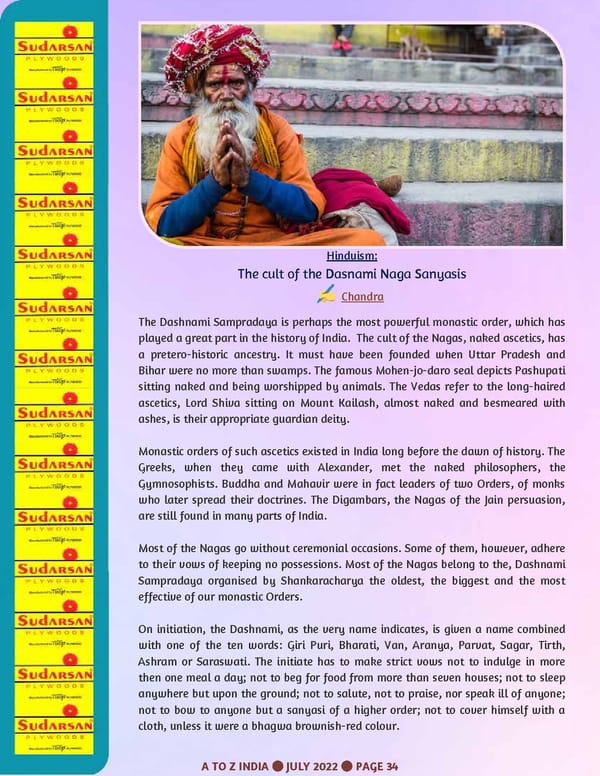Chandra The Dashnami Sampradaya is perhaps the most powerful monastic order, which has played a great part in the history of India. The cult of the Nagas, naked ascetics, has a pretero-historic ancestry. It must have been founded when Uttar Pradesh and Bihar were no more than swamps. The famous Mohen-jo-daro seal depicts Pashupati sitting naked and being worshipped by animals. The Vedas refer to the long-hair ed ascetics, Lord Shiva sitting on Mount Kailash, almost naked and besmeared with ashes, is their appropriate guardian deity. Monastic orders of such ascetics existed in India long before the dawn of history. The Greeks, when they came with Alexander, met the naked philosophers, the Gymnosophists. Buddha and Mahavir were in fact leaders of two Orders, of monks who later spread their doctrines. The Digamb ars, the Nagas of the Jain persuasion, are still found in many parts of India. Most of the Nagas go without ceremonial occasions. Some of them, however, adhere to their vows of keeping no possessions. Most of the Nagas belong to the, Dashnami Sampradaya organised by Shankaracharya the oldest, the biggest and the most effective of our monastic Orders. On initiation, the Dashnami, as the very name indic ates, is given a name combined with one of the ten words: Giri Puri, Bharati, Van, Aranya, Parvat, Sagar, Tirth, Ashram or Saraswati. The initiate has to make strict vows not to indulge in more then one meal a day; not to beg for food from more than seven houses; not to sleep anywhere but upon the ground; not to salute, not to praise, nor speak ill of anyone; not to bow to anyone but a sanyasi of a high er order; not to cover himself with a cloth, unless it were a bhagwa brownish-red colour. The cult of the Dasnami Naga Sanyasis Hinduism: A TO Z INDIA JULY 2022 PAGE 34
 A TO Z INDIA - JULY 2022 Page 33 Page 35
A TO Z INDIA - JULY 2022 Page 33 Page 35